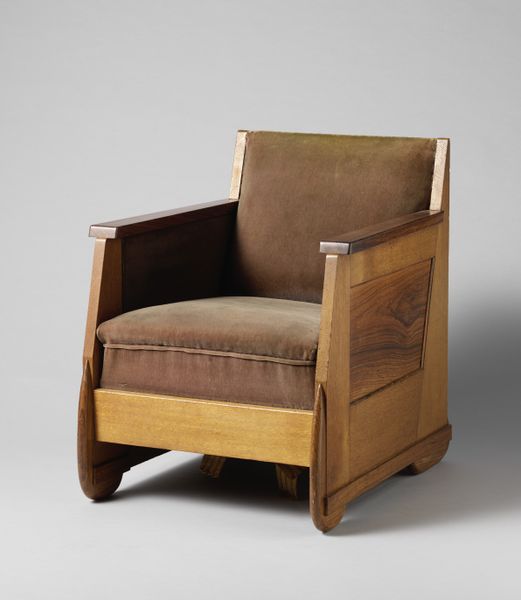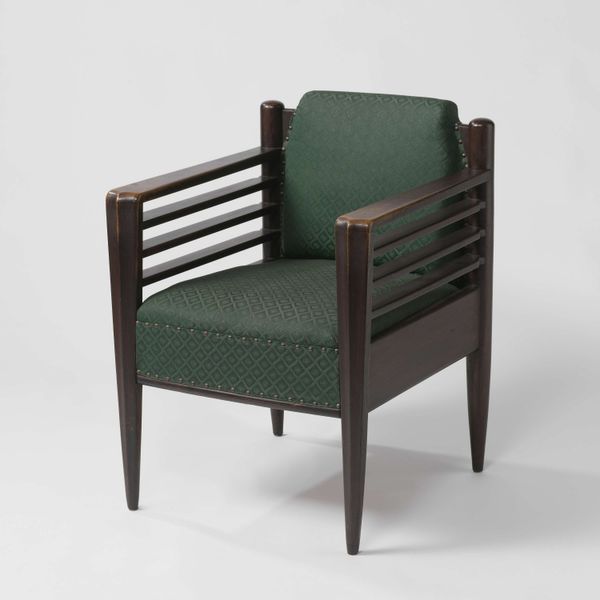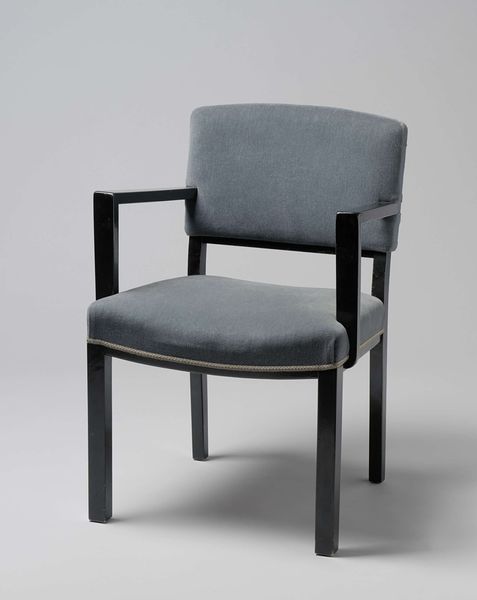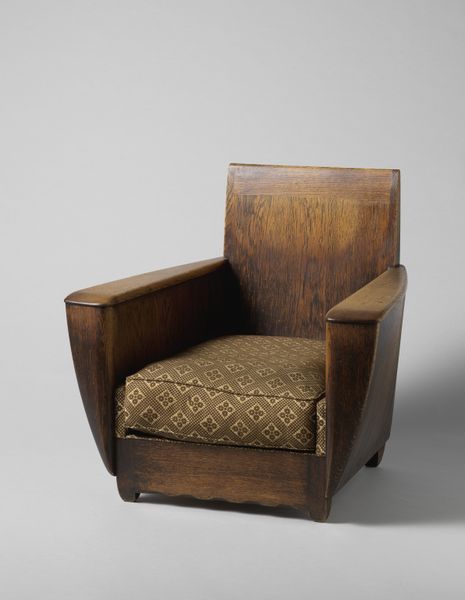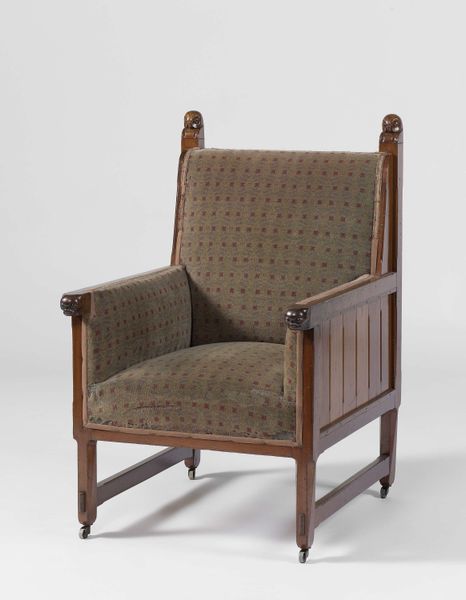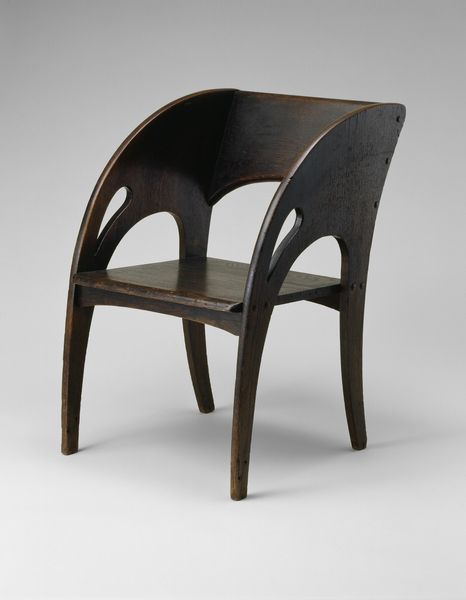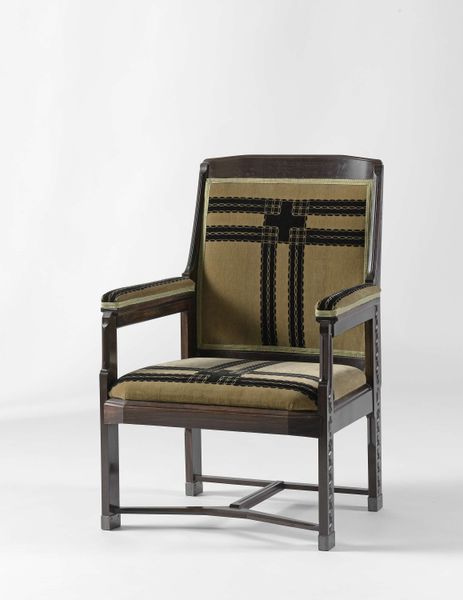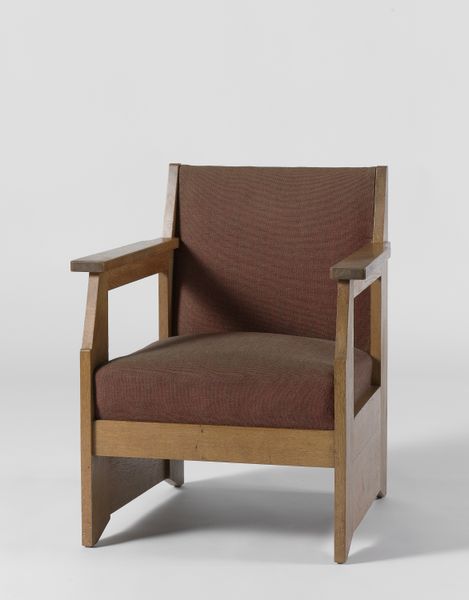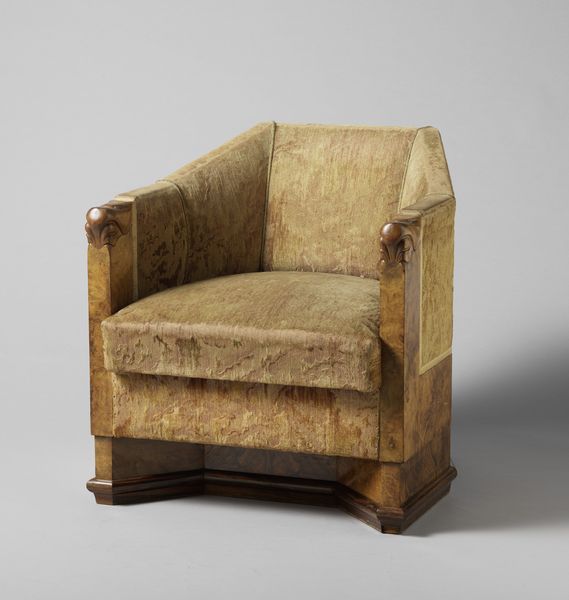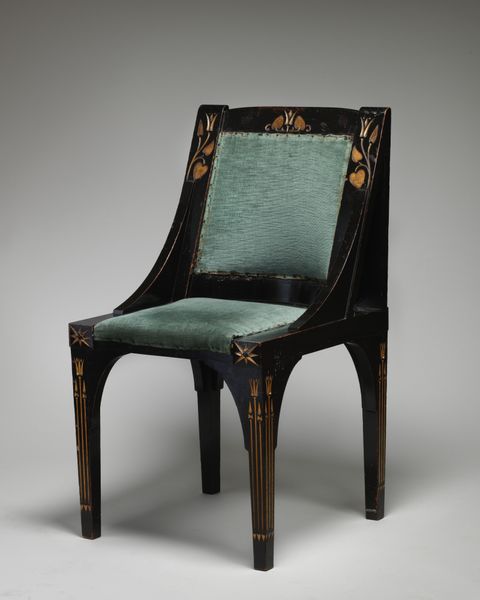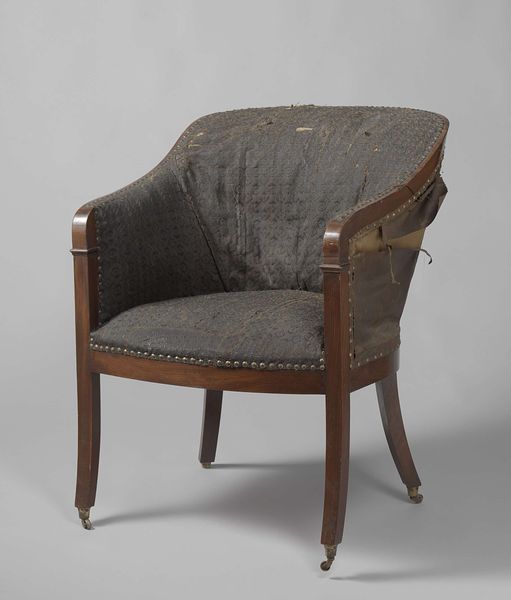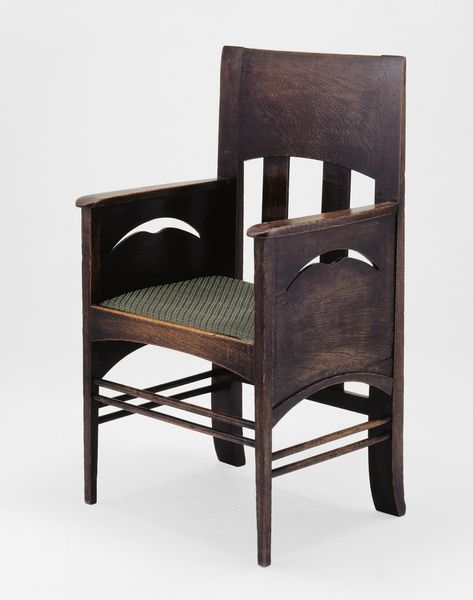
carving, wood
#
portrait
#
carving
#
geometric
#
united-states
#
wood
#
decorative-art
Dimensions: 40 1/2 x 28 5/8 x 33 in. (102.9 x 72.7 x 83.8 cm)
Copyright: Public Domain
Curator: I'd like to introduce you to an "Armchair" created around 1797 to 1800 by Duncan Phyfe. It resides here at the Metropolitan Museum of Art. Editor: My first impression is how surprisingly geometric and boxy it looks, especially for that period. And is that bluish gray leather or painted wood? There's a starkness to it. Curator: Indeed. Phyfe was a master cabinetmaker catering to the affluent merchant class of early America. While drawing inspiration from European neoclassical design, he adapted it to suit American tastes and resources. Notice the contrast of the delicate, carved legs with the heavier upholstered body. Editor: The legs definitely offer a crucial counterpoint. That dark, almost ebony finish draws the eye down and provides grounding, so to speak. It prevents the boxy upper from feeling too oppressive. Curator: This piece reflects the changing social landscape. With the rise of a wealthy merchant class, there was a greater demand for refined furnishings that signified status and taste. Furniture became a visual symbol of aspiration. Editor: I’m also intrigued by the upholstery; it's hard to discern its texture from here. The buttoned back is interesting because the tufts seems intentionally shallow—there's barely any give, reinforcing that feeling of controlled elegance. Curator: The relatively straight lines and restrained ornamentation also mirror the political sentiments of the young republic, a move away from overt displays of aristocracy, subtly shifting towards something more “democratic” even within luxury items. Editor: Thinking about it visually, the geometry and symmetry project a kind of solid, reassuring, yet self-contained power. It really wouldn't look out of place even in a much later modernist setting. Curator: Yes, it really speaks to Phyfe's skill in blending the stylistic influences of his time into something new and distinctly American. What do you make of its statement within the collection today? Editor: It offers a compelling case study in visual tension—the balance between ostentation and utility. I now see why such a strong design holds such enduring appeal, and why its physical construction is a triumph. Thank you for highlighting its complexities.
Comments
No comments
Be the first to comment and join the conversation on the ultimate creative platform.
